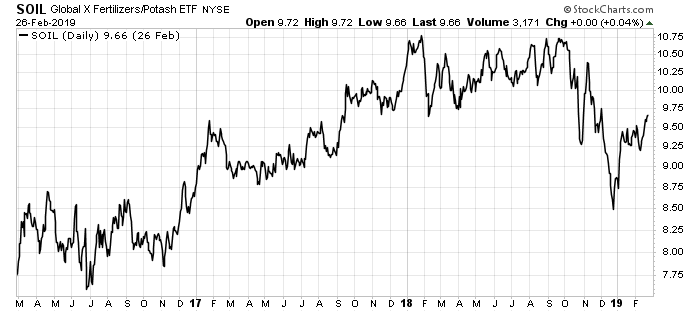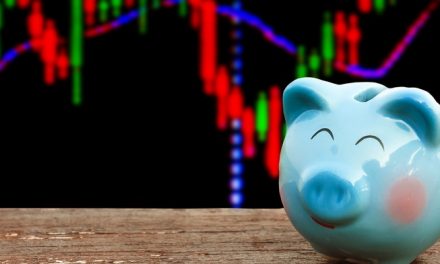It’s a good time to bet on this “must-have” commodity.
Don’t tell anyone, but I’m a closet farmer. As a young man, I worked on a dairy farm for several years. That experience left an indelible mark on who I am today … I took away many habits from it:
- The ability to do hard work until the job is done.
- An interest in weather forecasts.
- An obsession with agriculture commodities like grains and fertilizer.
That last one may make you laugh. I’m probably the only person east of Illinois who gets frequent farm-condition updates.
Most of the time, the news isn’t actionable. But today, we have something we can invest in…
The headlines on AgFax — an agriculture news website — show a steady trend of rising fertilizer prices. All throughout January and into February, the headlines told a story of rising prices for major fertilizers.
Nitrogen prices led the way. However, potash prices could finish the year stronger.
Fertilizer Stocks Are Making a Comeback
As gardeners know, there are three basic fertilizers: nitrogen, phosphorous and potassium — known as NPK.
Modern agriculture relies on applications of these three nutrients. From the end of 2017 to the end of 2018:
- Phosphorous prices rose about 10%.
- Potassium prices rose about 11%.
- And nitrogen was up about 20%.
That’s reflected in the big fertilizer stocks right now, as you can see in the chart below:

Fertilizers can be excellent investments because they are “must-have” commodities — like oil and electricity. They include critical nutrients.
The creation of one of them, the nitrogen fertilizer, ranks in the top innovations in farming history.
But being “must-have” commodities is not the only reason prices are going up. There are three catalysts driving fertilizer prices in 2019: China, bad weather and rising demands.
3 Reasons Why Fertilizer Prices Are Rising
Fertilizer prices took a beating at the end of 2018. As you may recall, thanks to the trade war with China, U.S. farmers left tons of soybeans rotting in warehouses and fields.
China slapped $27 billion in retaliatory tariffs on U.S. farm goods. It was an unexpected blow that hit the U.S. farm belt hard.
The federal government bailed out many farmers with $7.7 billion in subsidies.
As the trade war fears settle down, fertilizer stocks are moving higher again. China offered to buy $30 billion per year of soy, corn, wheat and “other agricultural products” as an olive branch toward making a deal.
That will be good news for farmers … and fertilizer makers.
The second catalyst for fertilizer in 2019 is the bad weather last fall. Farmers usually fertilize fields after harvest and let them rest over the winter.
Early snows led to less fertilizer use. Giant fertilizer producer Mosaic forecasts that at least 80% of what didn’t get applied in the fall will be put down this spring.
The third catalyst will be the demand for grain in 2019. The forecast demand is well above average, according to Bloomberg.
That means prices for wheat, corn and soy should remain high. Higher grain prices will allow farmers to spend money on fertilizer … pushing up demand.
We should see a solid return on those stocks. The easy way to play this uptrend is the Global X Fertilizers/Potash ETF (NYSE: SOIL). This was a $12 stock in 2015, which would be a 25% gain from its current price.
Good investing,

Matt Badiali
Editor, Real Wealth Strategist




